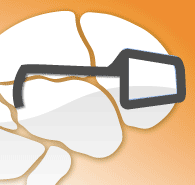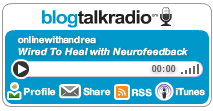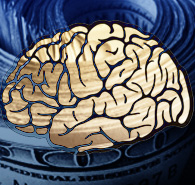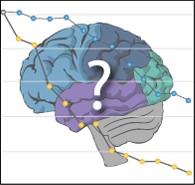by Siegfried Othmer | July 29th, 2009
 The near-win of Tom Watson at the British Open Golf Tournament at the age of 59 gives us the impetus to address the issue of healthy aging. Everywhere the elderly are sticking around, in careers, in positions of power, and even in sports where youthful eyeballs, strength, and stamina confer an advantage. The present concern about the looming health care crisis, however, focuses us ever on the other part of the spectrum, the gradually deteriorating health status of the elderly. Our present system of health care seems to do well at keeping people alive, but often with very little quality of life. With an ever growing contingent of the elderly, the costs keep creeping up, but the return on our societal investment keeps diminishing. The movement toward healthy aging not only promises to increase the return on that investment, but it also gives hope of making inroads into the cost of health maintenance itself. Read on. The near-win of Tom Watson at the British Open Golf Tournament at the age of 59 gives us the impetus to address the issue of healthy aging. Everywhere the elderly are sticking around, in careers, in positions of power, and even in sports where youthful eyeballs, strength, and stamina confer an advantage. The present concern about the looming health care crisis, however, focuses us ever on the other part of the spectrum, the gradually deteriorating health status of the elderly. Our present system of health care seems to do well at keeping people alive, but often with very little quality of life. With an ever growing contingent of the elderly, the costs keep creeping up, but the return on our societal investment keeps diminishing. The movement toward healthy aging not only promises to increase the return on that investment, but it also gives hope of making inroads into the cost of health maintenance itself. Read on.
In our current orientation in medicine, the tendency is to regard certain symptoms as a natural part of aging and then to adopt a policy of “watchful waiting,” particularly when we don’t have a ready remedy in any event. The same passivity, however, afflicts the research community. As the cartoon says, “Not only is there no cure, but there isn’t even a race for a cure.” This might be defensible if it weren’t for the fact that ignoring some issues just sets the table for worse to come. Further, some emerging health problems are quite optional, as we shall see.
Read More »
Posted in Application of Neurofeedback, Biofeedback, Efficacy, Neurofeedback | 8 Comments »
by Siegfried Othmer | July 16th, 2009
 Dr. Siegfried Othmer the Chief Scientist for the EEG Institute goes onlinewithandrea to discuss Neurofeedback and how it is used to help conditions such as Anxiety, Autism, Cerebral Palsy, Depression, Seizures, Post Traumatic Syndrome, ADD/ADHD, Sleep Disorders, and many others. Dr. Siegfried Othmer the Chief Scientist for the EEG Institute goes onlinewithandrea to discuss Neurofeedback and how it is used to help conditions such as Anxiety, Autism, Cerebral Palsy, Depression, Seizures, Post Traumatic Syndrome, ADD/ADHD, Sleep Disorders, and many others.
Hosted by Andrea R. Garrison
This interview is approximately 2.5 hours in length.
To listen to this interview:
Click on the image of the multimedia player below to be taken to the blogtalkradio.com website.

Posted in ADD / ADHD, Application of Neurofeedback, Clinical Methods, Commentary, Efficacy, Neurofeedback, Scientific | No Comments »
by Siegfried Othmer | April 29th, 2009
 Some years ago the parent of an ADHD child we had trained told us, “I would have given my house for what you have done for my child.” Nowadays such sentiments are more likely to be expressed by parents of autistic children. Not every person who pays for our services feels this way, but clearly a lot of people recognize that the value of neurofeedback bears no relationship to its costs. There’s no way to put a dollar value on the recovery of function in traumatic brain injury, dementia, or psychological trauma, or in the case of developmental delay. Some years ago the parent of an ADHD child we had trained told us, “I would have given my house for what you have done for my child.” Nowadays such sentiments are more likely to be expressed by parents of autistic children. Not every person who pays for our services feels this way, but clearly a lot of people recognize that the value of neurofeedback bears no relationship to its costs. There’s no way to put a dollar value on the recovery of function in traumatic brain injury, dementia, or psychological trauma, or in the case of developmental delay.
This presents no problem to the economist who sees the price of an item as giving us the best measure of what it is actually worth. But we do have a problem in the economic modeling of health care precisely because perceived value is so out of line with costs. This is true across the board, and most particularly when it comes to life-saving medical interventions, or procedures that extend our useful lives further into the future. There’s almost no limit to what most individuals would wish to have done in order to recover function, and to extend useful life expectancy. What would Howard Hughes, for example, have been willing to do for his obsessive-compulsive condition? (If only he had had neurofeedback!)
Can one put this in terms that an economist can work with? The mother at the beginning of this tale saw the value to her child as equal to the value of her house, which probably constitutes the bulk of her assets. All of our tangible assets taken together probably amount to some five to ten times our annual GNP, give or take a housing and stock market bubble. So even if most people would be willing to pony up only some ten percent of their assets to assure the desired outcome of a critical medical or rehabilitative procedure, the total value still comes to something comparable to our whole GNP. One could go on to construct a wholly different GNP based not on actual prices but rather on perceived value of what the economy actually produces. Let’s call this a virtual GNP, on the basis of which one could envision a virtual economy of the future in which such value judgments would have a greater policy impact. We can see how that might go in the case of health care:
Read More »
Posted in Application of Neurofeedback, Commentary, Neurofeedback | 5 Comments »
by Siegfried Othmer | March 13th, 2009
 Several disjoint pieces of information have been intruding on my consciousness for some while. At last year’s NBA finals, a courtside seat at Staples Center went for more than $27,000. That was for a single game. At about the same time, I noticed an ad informing readers that the 99cent store also had a bridal registry. These nuggets nicely encapsulate the two economic realms that coexist in our nation, particularly in our cities. The pattern is replicated abroad. In the world at large, there are enough cell phones for two-thirds of the world’s population, while the remaining one-third lives on less than $2 per day. When it comes to meeting basic survival needs, the amounts required are modest indeed, even in our society. Several disjoint pieces of information have been intruding on my consciousness for some while. At last year’s NBA finals, a courtside seat at Staples Center went for more than $27,000. That was for a single game. At about the same time, I noticed an ad informing readers that the 99cent store also had a bridal registry. These nuggets nicely encapsulate the two economic realms that coexist in our nation, particularly in our cities. The pattern is replicated abroad. In the world at large, there are enough cell phones for two-thirds of the world’s population, while the remaining one-third lives on less than $2 per day. When it comes to meeting basic survival needs, the amounts required are modest indeed, even in our society.
There are several implications. First of all, the economy we have is largely discretionary. Secondly, if the people at the bottom lose their livelihood, this can get lost in the economic aggregates. We cannot look to the aggregate economic pulse as an index to suffering. We have to look for it directly. The signposts are everywhere. A car’s windshield is smashed to yield an old iPod that is worth perhaps $30 on the street. A man slashes all the tires in a parking lot–no doubt the signature of seething resentments. A father kills himself and his family because of a $6,000 debt that he cannot cover.
The Fed is projecting on the order of 1.2% decline in economic aggregates for the year. Of course Fed projections are really lagging indicators. It does not want to be harbinger of bad news. But even if things turn out to be even three to six times worse, somehow that does not seem sufficient to put our society into crisis. The real crisis in fact lies elsewhere. At the bottom end, we have people falling out of the cash economy into penury. At the top end, we have the collapse of asset valuations. And in the middle we have a lot of stress and angst.
Read More »
Posted in Application of Neurofeedback, Commentary, Neurofeedback | 7 Comments »
by Siegfried Othmer | February 19th, 2009
 We have just experienced a remarkably quick recovery from PTSD symptoms in a Vietnam veteran. The case is illustrative of the more rapid pace of recovery that is achievable with the latest neurofeedback techniques that encompass the infra-low range of EEG frequencies. The veteran has had a forty-year history of PTSD, and was rescued from homelessness by the Salvation Army here in Los Angeles. He came to our offices for intensive neurofeedback training through the auspices of the Salvation Army. In exchange for our providing services at no cost, the veteran has allowed us to make his case history available for the benefit of other clinicians. We have just experienced a remarkably quick recovery from PTSD symptoms in a Vietnam veteran. The case is illustrative of the more rapid pace of recovery that is achievable with the latest neurofeedback techniques that encompass the infra-low range of EEG frequencies. The veteran has had a forty-year history of PTSD, and was rescued from homelessness by the Salvation Army here in Los Angeles. He came to our offices for intensive neurofeedback training through the auspices of the Salvation Army. In exchange for our providing services at no cost, the veteran has allowed us to make his case history available for the benefit of other clinicians.
For scientific purposes, the veteran has agreed to undergo pre-post quantitative EEG analysis (courtesy of QMetrx) and SPECT imaging (courtesy of the Amen Clinics). As the training is still on-going, these pre-post comparisons are not yet available. However, we do have initial symptom-tracking data that already tell quite a story. Symptoms are assessed on the basis of self-report at typically three-session intervals. Severity is rated on a ten-point scale. Results for the first eighteen training sessions are shown in Figure 1. Overall symptom reduction reached 50% by session ten, and was more than 80% by session eighteen. The symptom list was broadly inclusive, and covered a number of areas not considered to be classically associated with PTSD. Eleven out of the twenty major symptoms were rated at zero by session 18. None were rated higher than 4 out of ten by session 18. The picture is one of broad improvement in self-regulatory capacity.
The picture is actually even more dramatic when data are segregated for the symptoms commonly associated with PTSD. These are shown in Figure 2. With regard to PTSD symptoms, overall improvement reached 50% within three sessions, and reached 93% in 18 sessions. Even more significantly, nightmares, flashbacks, suicidal thoughts, and binging and purging were all eliminated within three sessions. These were the most troublesome PTSD-related symptoms. The most persistent symptoms related to the quality of sleep. At the first QEEG session it became obvious that the veteran was suffering from sleep apnea. He was unable to stay awake for the QEEG assessment. This was a problem during the early neurofeedback sessions as well. By session 18, he was getting through entire alpha-theta sessions without falling asleep. Other persistent symptoms relate to motor function and mobility. Currently the veteran remains confined to a wheelchair. The improvement in hypertension is not entirely attributable to neurofeedback: as a result of the training, the veteran was motivated to be more consistent in taking his blood pressure medication. Read More »
Posted in Application of Neurofeedback, Clinical Results, Efficacy, Neurofeedback, Protocols, PTSD, Veterans | 2 Comments »
by Siegfried Othmer | January 26th, 2009
 The inauguration of President Barack Obama was another one of those rare events that draws our individual nervous systems into collective patterns of activity all the way across the nation. David Kaiser did his dissertation on this general topic, monitoring a number of EEGs while a movie was being watched to determine the degree to which common and reproducible EEG activity was evoked as emotionally gripping scenes were on-screen. Ever since, I have on occasions like this imagined EEGs moving in a kind of unison across the country as we all watch the same emotionally evocative event at the same time. The inauguration of President Barack Obama was another one of those rare events that draws our individual nervous systems into collective patterns of activity all the way across the nation. David Kaiser did his dissertation on this general topic, monitoring a number of EEGs while a movie was being watched to determine the degree to which common and reproducible EEG activity was evoked as emotionally gripping scenes were on-screen. Ever since, I have on occasions like this imagined EEGs moving in a kind of unison across the country as we all watch the same emotionally evocative event at the same time.
A bias intrudes here however, in that good feelings tend not to be transitory or episodic, but rather to persist over time. So they are less likely to be noticeable in the EEG as sudden shifts than when we are dealing with negative or aversive events. Thus, our concern when Chief Justice Roberts flubbed his lines probably registered more strongly in our EEGs than the more persistent good feeling about the transition of power that was symbolized in the giving of the oath.
Then came the sober inaugural address, in which the dire circumstances in which the nation finds itself needed to be couched in palatable terms. How does one maintain optimism at a time like this? No one did this better than Franklin Roosevelt in his day, and no one does it better than Barack Obama now. Neither, however, had a substantive basis for optimistic projections beyond the notion that America usually finds its way out of the muddles it makes. This is not merely our self-delusion. Outsiders have the same impression. Said Bismarck: “God looks after drunks, little children, and the United States of America.” Or Churchill: “America usually solves its problems, after trying everything else first.” Read More »
Posted in Application of Neurofeedback, Commentary, Neurofeedback, Professional Issues | 1 Comment »
|
|
Subscribe to Email Newsletter
The EEG Info Newsletter circulates via email at least once a month. A variety of topics related to the Neurofeedback / EEG Biofeedback field are covered in over 300 articles.
|
 The near-win of Tom Watson at the British Open Golf Tournament at the age of 59 gives us the impetus to address the issue of healthy aging. Everywhere the elderly are sticking around, in careers, in positions of power, and even in sports where youthful eyeballs, strength, and stamina confer an advantage. The present concern about the looming health care crisis, however, focuses us ever on the other part of the spectrum, the gradually deteriorating health status of the elderly. Our present system of health care seems to do well at keeping people alive, but often with very little quality of life. With an ever growing contingent of the elderly, the costs keep creeping up, but the return on our societal investment keeps diminishing. The movement toward healthy aging not only promises to increase the return on that investment, but it also gives hope of making inroads into the cost of health maintenance itself. Read on.
The near-win of Tom Watson at the British Open Golf Tournament at the age of 59 gives us the impetus to address the issue of healthy aging. Everywhere the elderly are sticking around, in careers, in positions of power, and even in sports where youthful eyeballs, strength, and stamina confer an advantage. The present concern about the looming health care crisis, however, focuses us ever on the other part of the spectrum, the gradually deteriorating health status of the elderly. Our present system of health care seems to do well at keeping people alive, but often with very little quality of life. With an ever growing contingent of the elderly, the costs keep creeping up, but the return on our societal investment keeps diminishing. The movement toward healthy aging not only promises to increase the return on that investment, but it also gives hope of making inroads into the cost of health maintenance itself. Read on.





 Dr. Siegfried Othmer the Chief Scientist for the
Dr. Siegfried Othmer the Chief Scientist for the 
 Some years ago the parent of an ADHD child we had trained told us, “I would have given my house for what you have done for my child.” Nowadays such sentiments are more likely to be expressed by parents of autistic children. Not every person who pays for our services feels this way, but clearly a lot of people recognize that the value of neurofeedback bears no relationship to its costs. There’s no way to put a dollar value on the recovery of function in traumatic brain injury, dementia, or psychological trauma, or in the case of developmental delay.
Some years ago the parent of an ADHD child we had trained told us, “I would have given my house for what you have done for my child.” Nowadays such sentiments are more likely to be expressed by parents of autistic children. Not every person who pays for our services feels this way, but clearly a lot of people recognize that the value of neurofeedback bears no relationship to its costs. There’s no way to put a dollar value on the recovery of function in traumatic brain injury, dementia, or psychological trauma, or in the case of developmental delay. Several disjoint pieces of information have been intruding on my consciousness for some while. At last year’s NBA finals, a courtside seat at Staples Center went for more than $27,000. That was for a single game. At about the same time, I noticed an ad informing readers that the 99cent store also had a bridal registry. These nuggets nicely encapsulate the two economic realms that coexist in our nation, particularly in our cities. The pattern is replicated abroad. In the world at large, there are enough cell phones for two-thirds of the world’s population, while the remaining one-third lives on less than $2 per day. When it comes to meeting basic survival needs, the amounts required are modest indeed, even in our society.
Several disjoint pieces of information have been intruding on my consciousness for some while. At last year’s NBA finals, a courtside seat at Staples Center went for more than $27,000. That was for a single game. At about the same time, I noticed an ad informing readers that the 99cent store also had a bridal registry. These nuggets nicely encapsulate the two economic realms that coexist in our nation, particularly in our cities. The pattern is replicated abroad. In the world at large, there are enough cell phones for two-thirds of the world’s population, while the remaining one-third lives on less than $2 per day. When it comes to meeting basic survival needs, the amounts required are modest indeed, even in our society. We have just experienced a remarkably quick recovery from PTSD symptoms in a Vietnam veteran. The case is illustrative of the more rapid pace of recovery that is achievable with the latest neurofeedback techniques that encompass the
We have just experienced a remarkably quick recovery from PTSD symptoms in a Vietnam veteran. The case is illustrative of the more rapid pace of recovery that is achievable with the latest neurofeedback techniques that encompass the  The inauguration of President Barack Obama was another one of those rare events that draws our individual nervous systems into collective patterns of activity all the way across the nation. David Kaiser did his dissertation on this general topic, monitoring a number of EEGs while a movie was being watched to determine the degree to which common and reproducible EEG activity was evoked as emotionally gripping scenes were on-screen. Ever since, I have on occasions like this imagined EEGs moving in a kind of unison across the country as we all watch the same emotionally evocative event at the same time.
The inauguration of President Barack Obama was another one of those rare events that draws our individual nervous systems into collective patterns of activity all the way across the nation. David Kaiser did his dissertation on this general topic, monitoring a number of EEGs while a movie was being watched to determine the degree to which common and reproducible EEG activity was evoked as emotionally gripping scenes were on-screen. Ever since, I have on occasions like this imagined EEGs moving in a kind of unison across the country as we all watch the same emotionally evocative event at the same time.